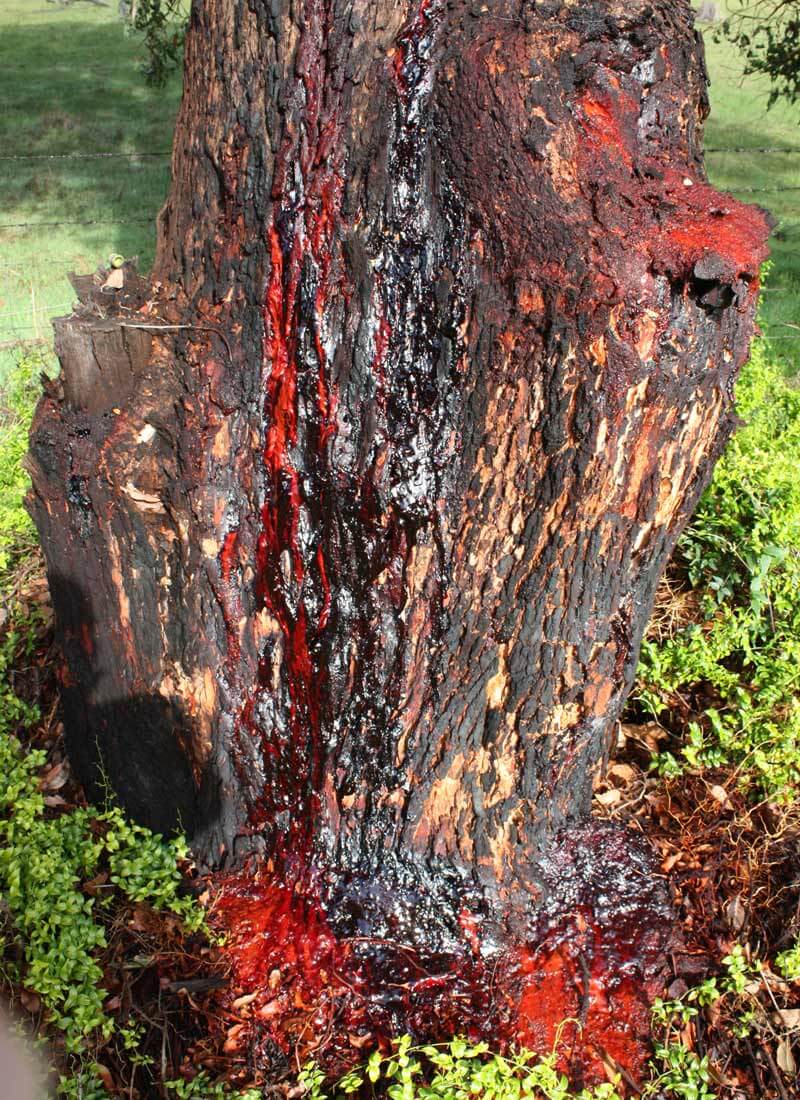Long before a tree perishes, it sends us both subtle and noticeable warnings indicating it is under stress and requires assistance. Recognizing these indicators, we can devise a management plan to maximize the tree’s chances of survival.
Here are the 13 top signs a tree is stressed and needs attention to help it survive.
What we cover
Toggle1. Thinning crown or dieback
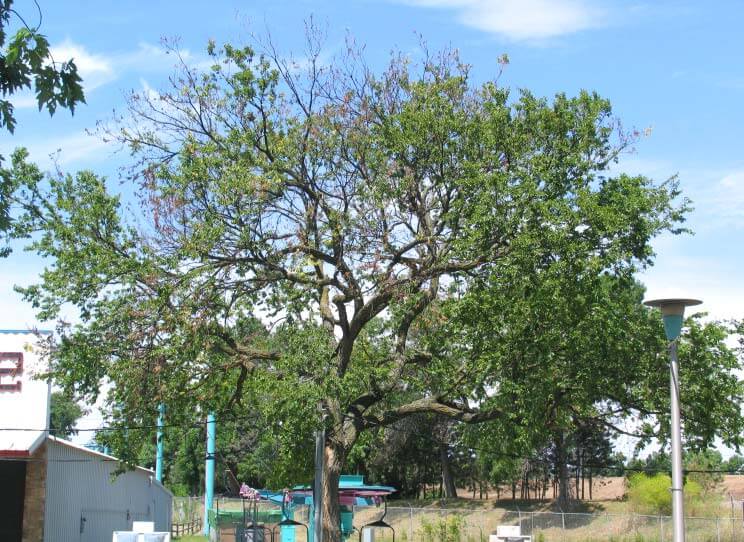
2. Profuse flowering
This sounds counterintuitive as a tree covered in flowers or fruit would appear healthy. The difference is trees typically have a nice spotted amount of flowers, but if 70% of the foliage is flowers or a ridiculous amount of fruit, it’s a sure sign the tree is fighting for survival.
So why all the flowers? The tree’s last-ditch effort is to spread its seeds before it dies. Seeds and or fruit follow flowering. This is its replication mechanism. Over-flowering is a sure sign a tree is trying its best to spread its seeds before it dies.
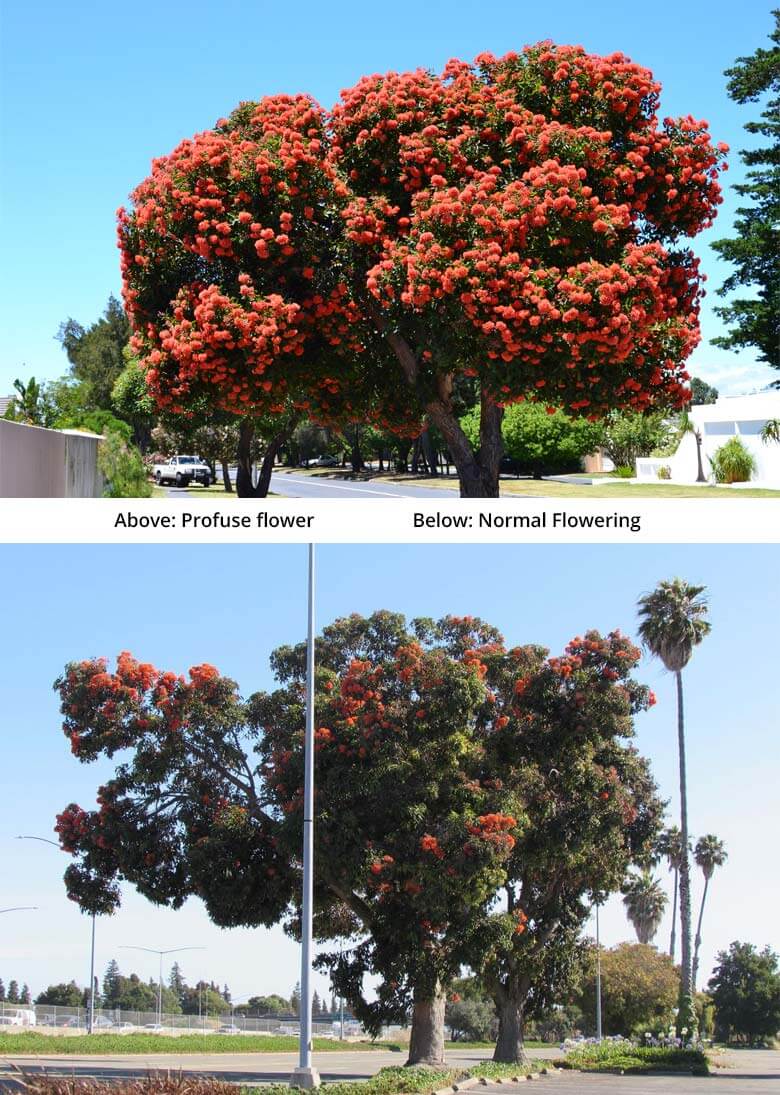
3. Deadwood
Noticing a lot of deadwood on a tree indicates it can no longer sustain its current canopy/ number of branches.
Its way of dealing with this is to cut off resources to specific branches and allow them to die. This enables it to sustain a smaller number of branches. This is common in times of drought and changed environmental conditions.
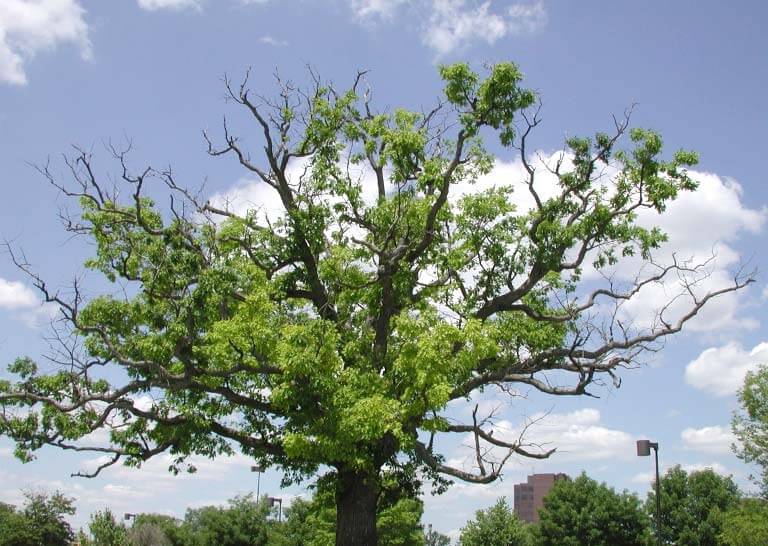
4. Branch drop
Similar to deadwood, where a tree will cut resources to a certain number of branches and allow them to die, branch drop is where a tree will also shed an entire healthy branch (usually a large lower branch) to achieve the same result. The reduction of to consolidate and survive. Again this happens during times of drought and almost exclusively in the summer.
It’s also referred to as summer branch drop. Eucalyptus and Oak trees are especially prone to this.
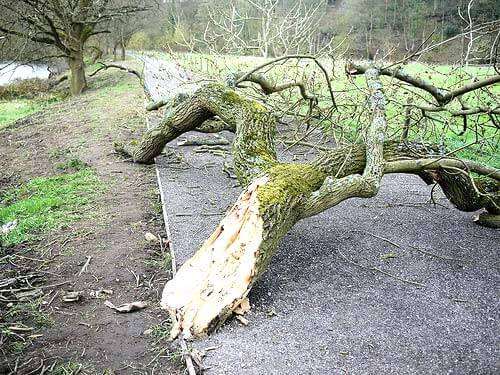
5. Wilting
Wilting is caused by a lack of water and turgidity in the tree’s cells. When a tree can not suck up the same amount of water it is expelling due to heat, the tree begins to wilt. This can but fixed very quickly by watering it.
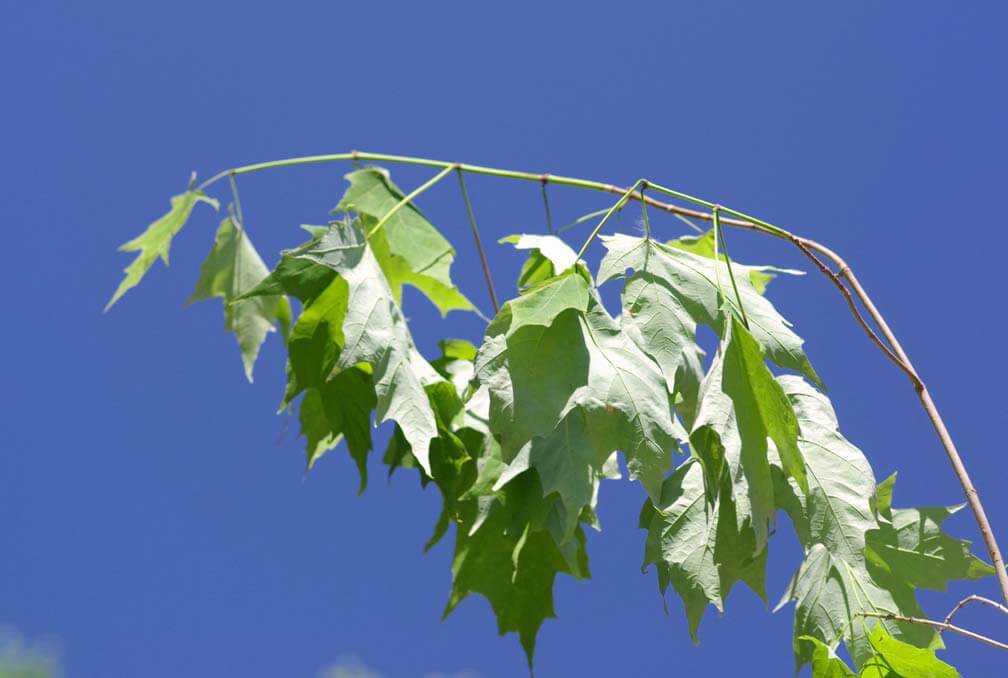
6. Heavy or repeated pest infection
Healthy trees don’t usually get boring pests like the elm beetle2 because its sap is natural protection. When a boring pest such as an Emerald Ash borer attempts to chew its way into the tree, it has to go past the bark.
If the tree is healthy, the sap in the bark will drown the pest before it gets a chance to make an impact. Spotting pest activity signifies that your tree is stressed and unable to produce sufficient sap to protect itself.
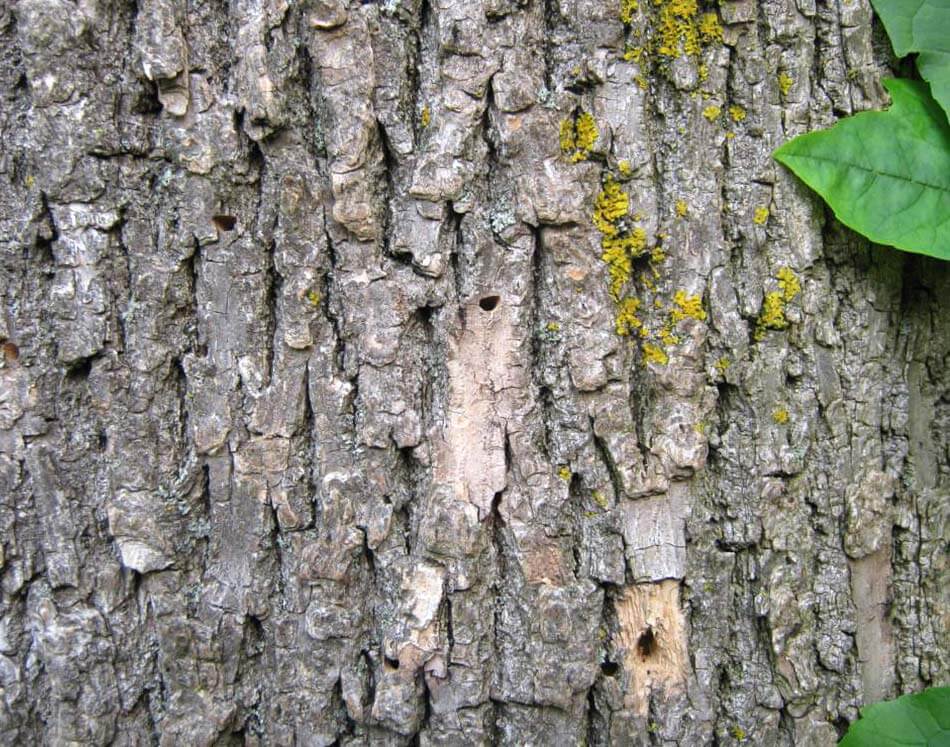
8. Cracking bark
Bark cracking is another sign the tree is drying out and its bark is shrinking and cracking as it does. Like wilting it is a sign the cells of the bark of the tree are lacking water. A quick fix is usually implementing a watering program. However, sometimes bark cracking is caused by trees freezing in the winter or even being struck by lightning.
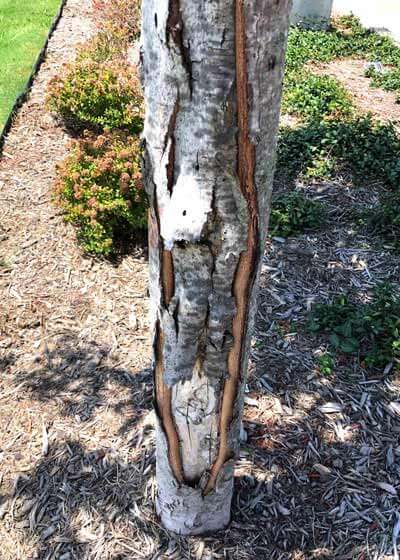
9. Epicormic shoots/ suckering
If you notice lots of suckers shooting out of the trunk of the tree and around the base, it’s another sign the tree is suffering. Why it shoots out suckers4 is not completely known but the theory is it no longer has the resources to keep functioning with its normal canopy and is consolidating into numerous smaller shoots close to the trunk. This happens typically in the latter of trees “death-rattle” and you will need to act fast to save it.
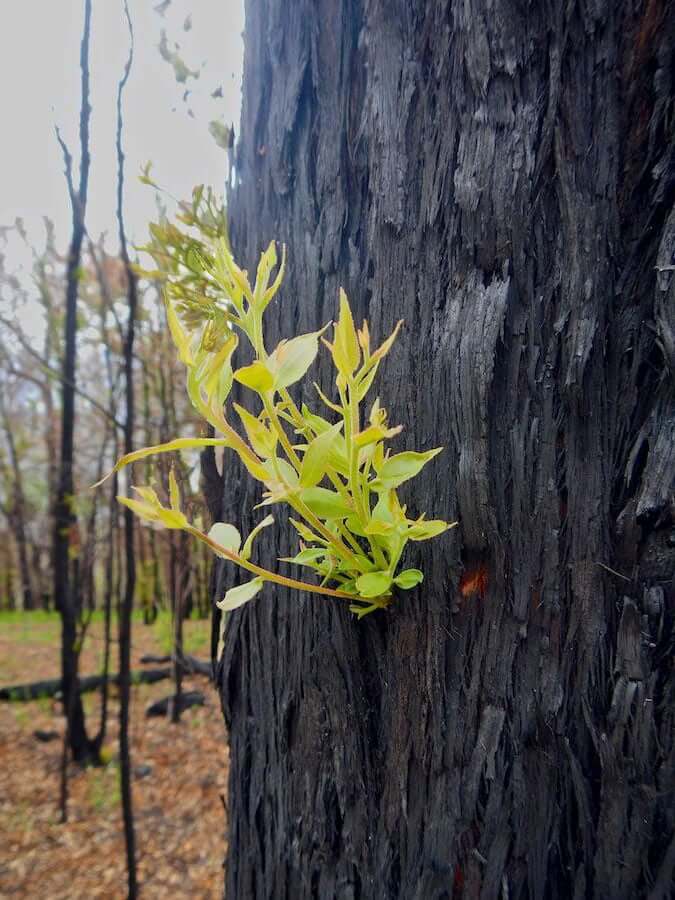
10. Leaf dropping
Evergreen trees drop their leaves all year round at a steady rate as they produce new ones. If you notice a thinning of foliage and or an excess of leaves on the ground, it could mean your tree is in trouble.
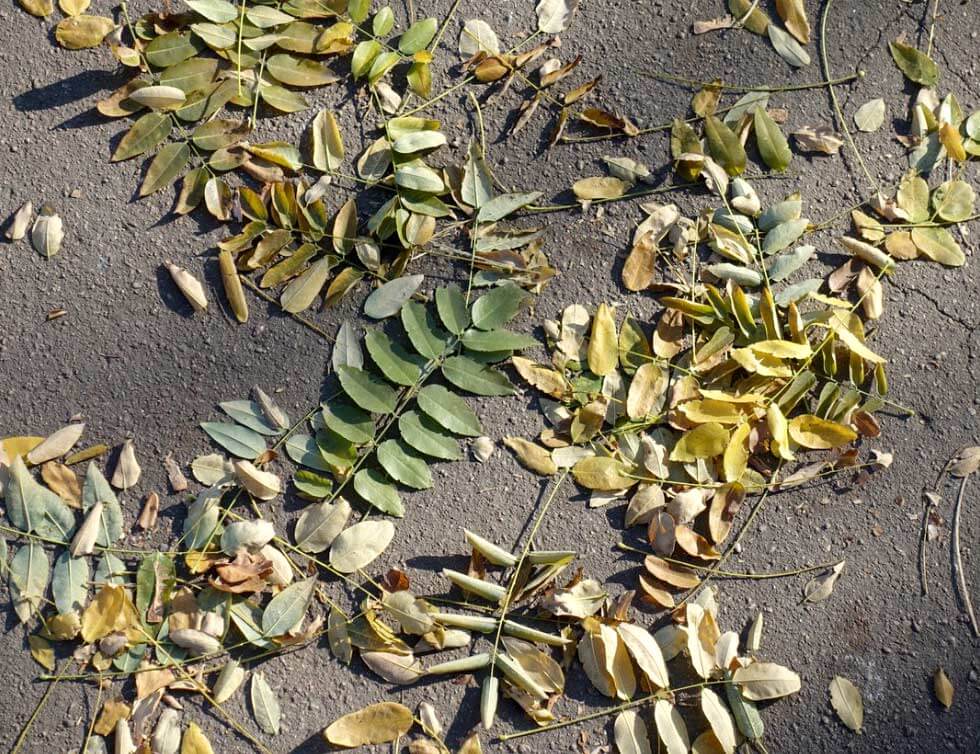
11. Leaf discoloration
Depending on the tree, instead of shedding leaves, they become discolored. This could mean various things from a poor PH balance in the soil to pests and/or disease. You may need the help of a qualified arborist or horticulturalist to diagnose the issue and implement a solution.
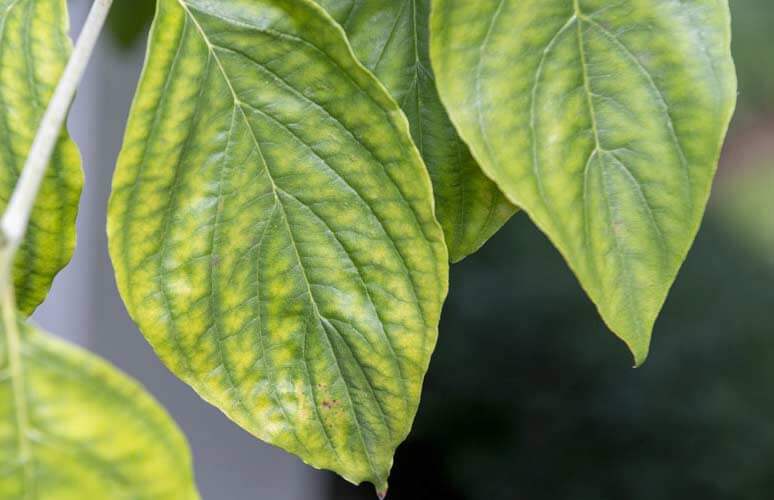
12. Premature Autumn color
If you notice your deciduous tree turning a lot sooner than other trees around it, it could be a sure sign it is suffering and is shutting down for a winter a little early to save resources.
Trees are quite sensitive to environmental changes, so if there is not enough water or even too much, the tree will react in different ways. An easy solution is pruning 30% of the foliage in late winter before spring budding begins.
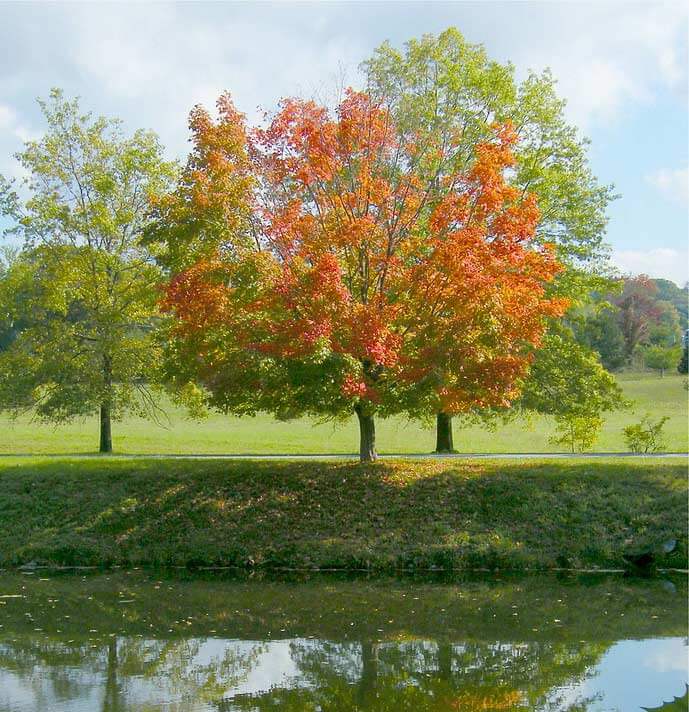
13. Late budding
Late budding is the opposite of the premature autumn color and is essentially the tree coming out of its winter hibernation late. Again, this can be fixed by trimming 20-30% of the foliage before it is due to bud for spring.
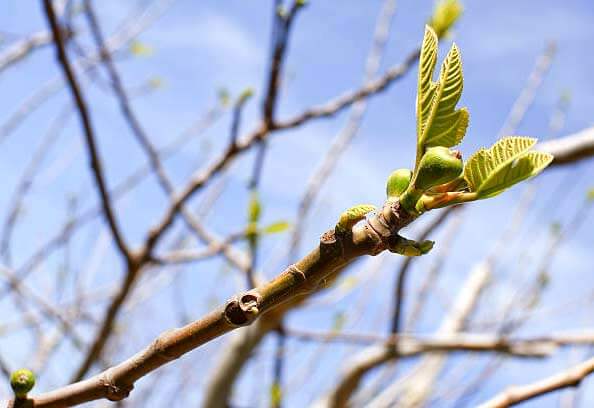
What to do if your tree is stressed/dying?
Even though there are several different signs a tree is stressed and or dying, the best fix to give the tree a new lease on life is to give it a good prune. Typically tree maintenance involves a pruning program that will normally see owners pruning mature trees every 3 – 4 years. If it’s been a while, then trimming 20-30% off the tree will reduce the number of dependent branches and foliage above ground to make it easier for the tree the maintain itself.
Trees thrive when conditions are unchanged. When the accessible water is reduced, the tree cannot maintain the current foliage and begins to recede in several ways described above. Removing foliage will bring the tree back into balance. Often, this will result in a healthy amount of new growth.
- Mary Carol Sheffield, Ellen M. Bauske, Wade Hutcheson, Bodie V. Pennisi, (2016) Is My Tree Dying? <https://extension.uga.edu/publications/detail.html?number=C1100&title=Is%20My%20Tree%20Dying> Accessed: 15-03-2024.
- Gregory A. Hoover, (2023) Elm Leaf Beetle <https://extension.psu.edu/elm-leaf-beetle> Accessed: 15-03-2024.
- Nikki Tilley, (2021) What Is Tree Sap? <https://www.gardeningknowhow.com/ornamental/trees/tgen/what-is-tree-sap.htm> Accessed: 15-03-2024.
- Tree Weaver, (2019) Epicormic Sprouts And Their Role In The Health Of The Tree. <https://www.treeweaverarborist.com/epicormic-sprouts-and-their-role-in-the-health-of-the-tree/> Accessed: 15-03-2024.
- Brian Hudelson, , (2012) Oak Wilt. <https://hort.extension.wisc.edu/articles/oak-wilt/> Accessed: 15-03-2024.

